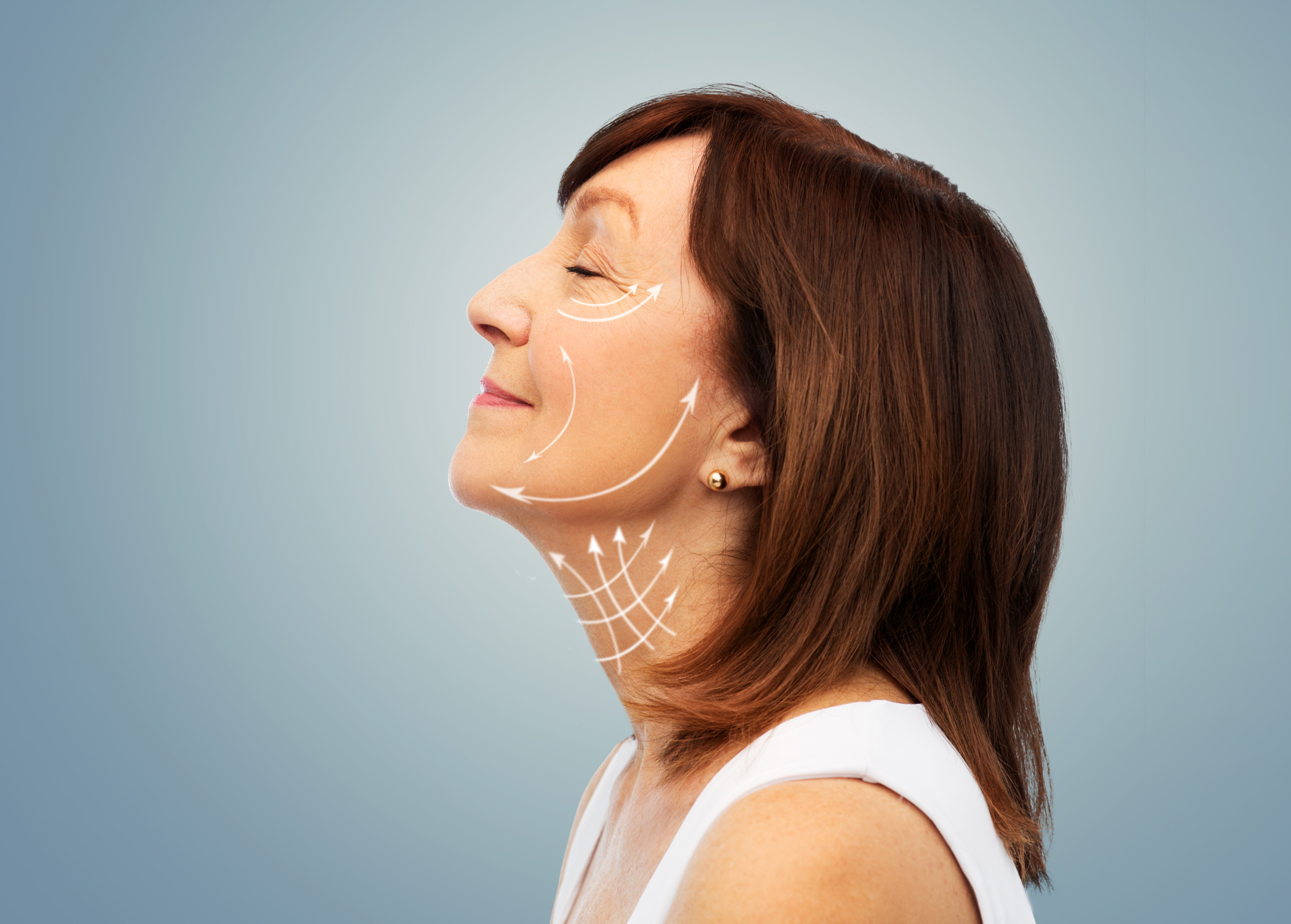As we age, the sensitive skin around our eyes begins to wrinkle. When the smile lines around the eyes become more noticeable, most women go straight to the pharmacy or dermatologist for topical solutions. In other words, creams or serums can do the trick. However, in some cases, those smile lines (sometimes referred to as “crow’s feet”) around your eyes won’t disappear so easily. In these instances, eye lift surgery can provide a solution.
What is eye lift surgery?
Medically referred to as blepharoplasty, an eyelift is a commonly requested procedure at most plastic surgery offices in the United States. This cosmetic surgery treats the upper or lower portion of the eye—or both, depending on the patient’s needs.
When treating the lower half of the eye, blepharoplasty can alleviate “hallowing.” In other words, it removes the sunken look created by a loss of fat under the eye. It can also treat the opposite under-eye issue: bags. This happens when older fat deposits actually expand over time.
When treating the upper eyes, eye lift surgery addresses the drooping skin that sags over the eyelid. Some people require this treatment because the skin can sag low enough to interfere with vision. During this procedure, your surgeon works to tighten both the musculature and skin around the eyes. Most plastic surgeons will supplement this procedure with what is known as a brow lift. It is a common counterpart to an eyelift because it can effectively reduce forehead lines, as well as hooded eyelids, both of which can age the eyes in an undesirable way.
What to expect from the procedure
The following steps take place during eye lift surgery. Please note that there may be some differences depending on your surgeon’s preferences and your unique circumstances as a patient. Your doctor will choose a method that best achieves your goals for the procedure.
Step #1: Anesthesia
First, your doctor will administer anesthesia. This can be done intravenously or through general anesthesia. Your doctor will determine which method is best for you. This is done to ensure your comfort during the procedure.
Step #2: Incision
Next, your surgeon will make an incision near the treatment area. Note that the doctor executes the incisions in such a way that the scars will be less noticeable.
When treating the upper eyelid, your surgeon will make the incision within the natural crease on the eyelid. He or she will then remove or reposition the fat deposits, tighten the muscles, and remove excess skin. To address issues on the lower lid, your surgeon makes the incision just below the lower lash line. Through this incision, he or she then removes excess skin under the lower eyelid. Additionally, the excess fat can be repositioned or removed.
Finally, if necessary, a transconjunctival incision, created on the inside of the lower eyelid, is an alternate technique. This helps to correct lower eyelid conditions and redistribute or remove excess fat. With this technique, your surgeon does not need to remove any skin.
Step #3: Closing the Incision
After the surgeon is complete with removing excess skin and fat, he or she will close the eyelid incisions. Typically, sutures or skin glue are used to close these incisions. After the procedure, your surgeon will remove the sutures within one week.
Note that your surgeon may also suggest the use of a laser or chemical peel to reduce discoloration of the lower eyelids.
Step #4: Recovery & Results
The results of eyelid surgery will appear gradually over the weeks following your procedure. The initial swelling and bruising will subside to reveal a rejuvenated eyelid and eye area. Recovery time for the procedure varies.
Recovery from eye lift surgery
During your eye lift surgery recovery, your doctor will recommend a few at-home treatments to make the process easier. He or she may recommend certain ointments and cold compresses. In some cases, the patient’s eyes are loosely covered with gauze, after the procedure is complete.
Your doctor will give you specific instructions that include how to care for your eyes, which medications you can take, which specific concerns to look for, and when to schedule a follow-up appointment.
At the beginning of your recovery, you may experience some swelling, bruising, irritation, dry eyes, and discomfort. These side effects can be controlled with medication, cold compresses, and ointment. Irritation at the incision sites is also possible.
Dr. Berlet Helps Patients in Northern NJ & NYC
Dr. Berlet has been serving men and women in the northern New Jersey and New York City areas for over 20 years. Along with this caring and attentive staff, Dr. Berlet aims to help patients achieve the best outcomes possible from their cosmetic procedures. If you are interested in a Brachioplasty procedure, reach out to the team at Dr. Berlet’s office today to learn more! In the consultation, we will have a detailed conversation about the procedure and your desired outcome. We can help you attain the look you’ve always wanted.
